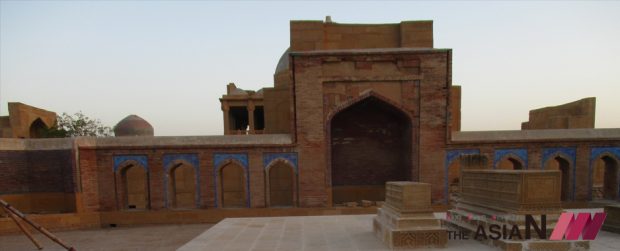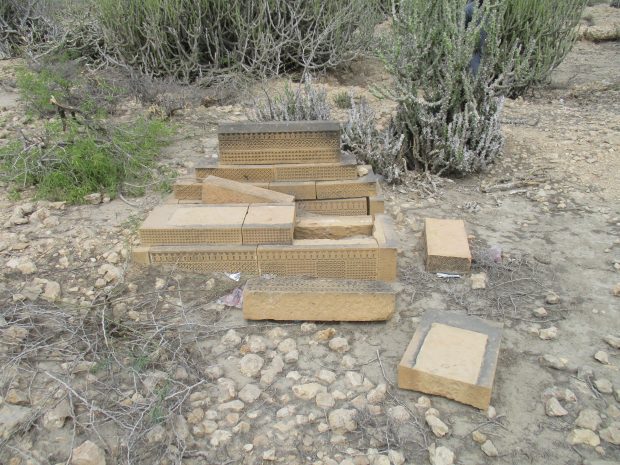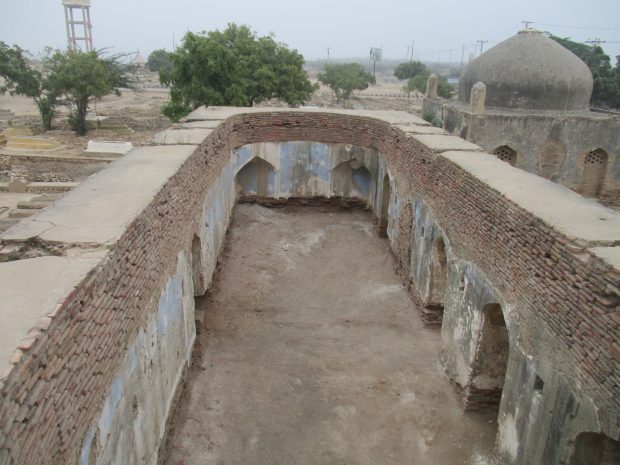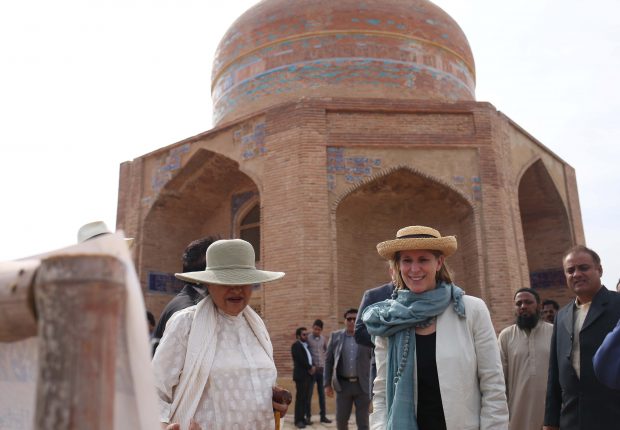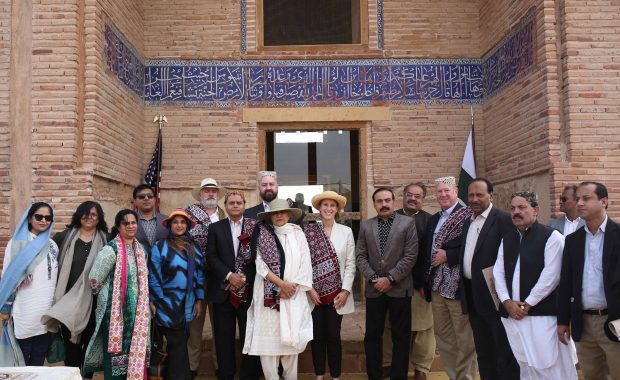Makli – the Necropolis of Invaders, Kings, Queens and Saints
With funding by the Republic of Korea, the United Nations Educational, Scientific & Cultural Organization UNESCO has launched a program in Pakistan to hold training workshops for the officials of provincial archeological departments of the country on ‘involving the local communities in protecting and preservation of historic places and ancient monuments’. One of such workshop was held in Karachi for the officials of Archeology Department of Sindh on November 2, 2017. The experts from Bangladesh, Jordan, Nepal, and Oman also attended and presented case studies at the workshop.
Speaking at the workshop, Syed Sardar Shah, the provincial minister for Culture & Tourism, announced that his department would be organizing 2-day International Seminar at Makli, one of the largest necropolises in the world, on January 1 to 14, 2018.
Makli is one of Pakistan’s six world heritage sites declared by UNESCO in 1981, but owing to negligence by federal government authorities in the past and encroachments by local communities, the necropolis features began to decay. This resulted in UNESCO warning that it would delist Makli as a World Heritage.
Just 90 km east of Karachi, the southern port city and capital of Sindh province, a hilly area known as the Makli is known as the final resting place of invaders, kings, princes, saints and philosophers spreading over eight to ten square kilometers with graves and tombs of more than one hundred thousand people.
Very little is known at present about the meaning and origin of the word Makli; what is known is a myth. Legend has it that a traveller on holy pilgrimage to Mecca (One of the Holy City of Muslims in Arabia) stopped at the site and, upon seeing a mosque just outside Thatta district of Sindh, fell into a state of ecstasy repeating “Hadah Makka li” (this is Mecca for me). It is said a popular Sufi saint of the Samma period, Sheikh Hamad Jamali, then named the mosque Makli after this occurrence.
The necropolis rose to importance as a burial site between 1352 and 1524 AD, when the Samma Dynasty made the coastal town of Thatta as their capital.
The structures here seem more like small palaces than graves. Six types of monuments can be found across Makli. They include tombs, canopies, enclosures, graves, mosques and khanqas, the learning spaces where saints would teach and preach to their disciples.
Makli also has clusters of tombs and graves including those erected during the Arghun, Tarkhan and Mughal dynasties, between 1524 and 1739. Rulers of these invading dynasties were of Turko-Mongol origin, who brought northern, central and western Eurasian influences, such as delicate floral patterns and geometric designs, to the architecture, art, and stone carvings found in Makli.
For hundreds of years, the site has also been a place of worship for Muslim and Hindu pilgrims. The two faiths, along with Buddhists, have lived in this area peacefully for many centuries.
About 6 km from Makli’s southern entrance is located the Samma monument cluster. Samma Dynasty rulers were native people belonging to the Rajput clan. They gained control of Sindh in 1335 and expanded their territory north to modern-day Punjab. It was during the rule of Jam Tamachi, a 14th-century Samma prince, that the foundations of Makli were first laid.
Climatic conditions, such as erosion, earthquakes, flash floods caused by heavy rains, pollution and lack of attention had left the monuments in a critical state of deterioration.
“Soon after the devolution of archeological department by the federal government to the province, we started working on rehabilitation of our heritage sites,” Manzoor Ahmed Kanasro, Director General, Antiquities & Archeology Department of Sindh, told The AsiaN.
“The department has designed a Master Plan for the rehabilitation of necropolis and fortunately the UNESCO has approved it,” he said adding that construction of a boundary wall is also underway around historic tombs.
The necropolis faced yet another threat by people who would dig the graves and steal the precious gravestones with engraved inscriptions to be sold illegally. “In order to curb this illegal practice, we have appointed guards and provided them motorcycles to keep an eye on grave-diggers,” Mr. Kanasro told.
The department has further begun clearing the entire necropolis of wild bushes, graffiti, and installation of streetlights and construction of inner roads besides imposing a ban on plying vehicles. “But an important work undertaken by department is documentation of historic stones found broken and scattered in necropolis, so that they could be erected again at their actual place,” authorities said.
The good news is that the United States has also come forward to rehabilitate necropolis, Mr. Kanasro said, adding that in the first week of December 2017, U.S. Consul General Grace Shelton visited Makli Hill to participate in the completion ceremony for the Ambassadors Fund for Cultural Preservation project at the tombs of Sultan Ibrahim and Amir Sultan Muhammad. On this day, the US had provided more than $260,000 in funds to restore these tombs.
Consul General Shelton addressed those in attendance saying, “These sites are essential reminders of the contributions and historical experiences of humanity, and that through conservation efforts like this, we preserve these cultural treasures and the stories they tell for future generations.”



















